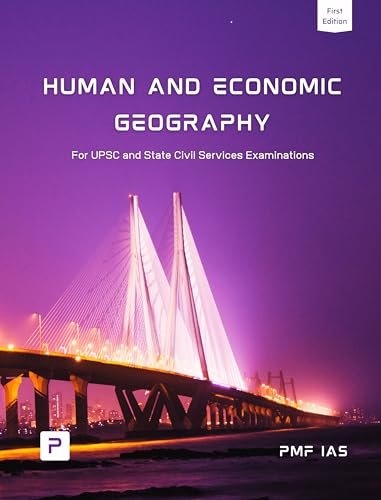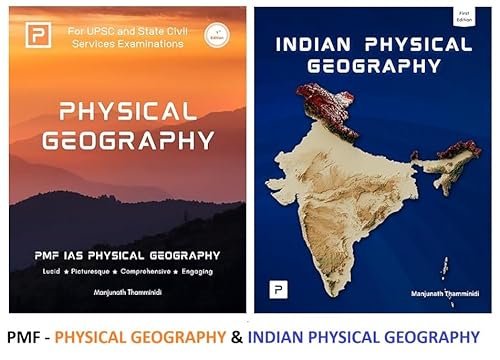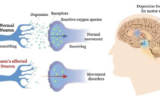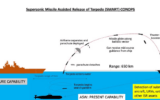
April 28-29 2024 Prelims Practice Questions (PPQs)
Subscribe to Never Miss an Important Update! Assured Discounts on New Products!
Must Join PMF IAS Telegram Channel & PMF IAS History Telegram Channel
- These Prelims Practice Questions (PPQs) are based on PMF IAS Daily Current Affairs.
- The daily current affairs are uploaded every day by 8 PM. You can read the Daily Current Affairs from here.
- Subscribers of the “Current Affairs” course can Download Daily Current Affairs in PDF/DOC from here.
[Quiz] Daily Prelims Practice Questions (PPQs) – April 28-29 2024
0 of 10 questions completed
Questions:
- 1
- 2
- 3
- 4
- 5
- 6
- 7
- 8
- 9
- 10
Information
These MCQs are based on PMF IAS Daily Current Affairs. The daily current affairs are uploaded every day by 8 PM. You can read the Daily Current Affairs from here. Subscribers of the “Current Affairs” course can Download Daily Current Affairs in PDF/DOC from here.
You have already completed the Test before. Hence you can not start it again.
Test is loading...
You must sign in or sign up to start the Test.
You have to finish following quiz, to start this Test:
Your results are here!! for" [Quiz] Daily Prelims Practice Questions (PPQs) – April 28-29 2024 "
0 of 10 questions answered correctly
Your time:
Time has elapsed
Your Final Score is : 0
You have attempted : 0
Number of Correct Questions : 0 and scored 0
Number of Incorrect Questions : 0 and Negative marks 0
| Average score |
|
| Your score |
|
-
Not categorized
You have attempted: 0
Number of Correct Questions: 0 and scored 0
Number of Incorrect Questions: 0 and Negative marks 0
| Pos. | Name | Entered on | Points | Result |
|---|---|---|---|---|
| Table is loading | ||||
| No data available | ||||
- 1
- 2
- 3
- 4
- 5
- 6
- 7
- 8
- 9
- 10
- Answered
- Review
-
Question 1 of 10
1. Question
Q1. {Prelims – In News} Consider the following statements about the Salmonella enterica serovar Typhi:
- Salmonella enterica serovar Typhi, known for causing typhoid fever, exhibits a unique characteristic of intracellular survival within macrophages, contributing to its ability to evade the host immune response and establish systemic infection.
- It is often associated with gastroenteritis in humans, demonstrates a peculiar adaptation known as ‘trigger mechanism,’ enabling it to switch between intracellular and extracellular lifestyles within the host, enhancing its virulence and dissemination.
Which of the above statement(s) is/are correct?
Correct
Explanation
Statement 1 is correct
- Salmonella enterica serovar Typhi has evolved mechanisms to survive and replicate within the phagocytic cells of the host immune system, particularly macrophages.
- This intracellular survival allows Salmonella Typhi to evade immune detection and clearance, thereby facilitating its dissemination within the host and leading to systemic infection characteristic of typhoid fever.
Statement 2 is incorrect
- While Salmonella Typhi has its own unique virulence factors and mechanisms for causing disease, the term “trigger mechanism” is not commonly used to describe its pathogenicity.
- Salmonella Typhi, however, is known for its ability to invade intestinal epithelial cells and cause systemic infection, leading to typhoid fever, rather than exhibiting a specific “trigger mechanism” adaptation.
- Instead of rapidly switching between intracellular and extracellular lifestyles, Salmonella Typhi tends to invade deeper tissues and organs after initially infecting the intestinal tract, leading to systemic dissemination and the characteristic symptoms of typhoid fever.
Answer: (a) 1 only; Difficulty Level: Medium
Incorrect
Explanation
Statement 1 is correct
- Salmonella enterica serovar Typhi has evolved mechanisms to survive and replicate within the phagocytic cells of the host immune system, particularly macrophages.
- This intracellular survival allows Salmonella Typhi to evade immune detection and clearance, thereby facilitating its dissemination within the host and leading to systemic infection characteristic of typhoid fever.
Statement 2 is incorrect
- While Salmonella Typhi has its own unique virulence factors and mechanisms for causing disease, the term “trigger mechanism” is not commonly used to describe its pathogenicity.
- Salmonella Typhi, however, is known for its ability to invade intestinal epithelial cells and cause systemic infection, leading to typhoid fever, rather than exhibiting a specific “trigger mechanism” adaptation.
- Instead of rapidly switching between intracellular and extracellular lifestyles, Salmonella Typhi tends to invade deeper tissues and organs after initially infecting the intestinal tract, leading to systemic dissemination and the characteristic symptoms of typhoid fever.
Answer: (a) 1 only; Difficulty Level: Medium
Unattempted
Explanation
Statement 1 is correct
- Salmonella enterica serovar Typhi has evolved mechanisms to survive and replicate within the phagocytic cells of the host immune system, particularly macrophages.
- This intracellular survival allows Salmonella Typhi to evade immune detection and clearance, thereby facilitating its dissemination within the host and leading to systemic infection characteristic of typhoid fever.
Statement 2 is incorrect
- While Salmonella Typhi has its own unique virulence factors and mechanisms for causing disease, the term “trigger mechanism” is not commonly used to describe its pathogenicity.
- Salmonella Typhi, however, is known for its ability to invade intestinal epithelial cells and cause systemic infection, leading to typhoid fever, rather than exhibiting a specific “trigger mechanism” adaptation.
- Instead of rapidly switching between intracellular and extracellular lifestyles, Salmonella Typhi tends to invade deeper tissues and organs after initially infecting the intestinal tract, leading to systemic dissemination and the characteristic symptoms of typhoid fever.
Answer: (a) 1 only; Difficulty Level: Medium
-
Question 2 of 10
2. Question
Q2. {Prelims – In News} Which innovative firefighting tool revolutionized aerial firefighting by enabling helicopters to efficiently scoop & drop large volumes of water onto wildfires?
Correct
Explanation
- The Bambi Bucket is an innovative firefighting tool that revolutionized aerial firefighting by enabling helicopters to efficiently scoop and drop large volumes of water onto wildfires.
- Developed by Canadian inventor Don Arney in the early 1980s, the Bambi Bucket consists of a collapsible bucket made of tough, flexible fabric or synthetic material, suspended on a cable beneath a helicopter.
- When deployed for firefighting operations, the helicopter hovers over a water source such as a lake, river, or reservoir.
- The Bambi Bucket is then lowered into the water, allowing it to fill up rapidly. Once filled, the helicopter ascends and transports the water to the fire location, where it releases the water payload onto the flames, helping to suppress the fire.
- The Bambi Bucket’s design allows for rapid filling and emptying, maximizing the efficiency of aerial firefighting operations.
- Its versatility and effectiveness have made it a vital tool in wildfire suppression efforts around the world, particularly in areas where access to water sources is limited or where terrain makes ground-based firefighting difficult or dangerous.
Answer: (c) Bambi Bucket; Difficulty Level: Medium
Incorrect
Explanation
- The Bambi Bucket is an innovative firefighting tool that revolutionized aerial firefighting by enabling helicopters to efficiently scoop and drop large volumes of water onto wildfires.
- Developed by Canadian inventor Don Arney in the early 1980s, the Bambi Bucket consists of a collapsible bucket made of tough, flexible fabric or synthetic material, suspended on a cable beneath a helicopter.
- When deployed for firefighting operations, the helicopter hovers over a water source such as a lake, river, or reservoir.
- The Bambi Bucket is then lowered into the water, allowing it to fill up rapidly. Once filled, the helicopter ascends and transports the water to the fire location, where it releases the water payload onto the flames, helping to suppress the fire.
- The Bambi Bucket’s design allows for rapid filling and emptying, maximizing the efficiency of aerial firefighting operations.
- Its versatility and effectiveness have made it a vital tool in wildfire suppression efforts around the world, particularly in areas where access to water sources is limited or where terrain makes ground-based firefighting difficult or dangerous.
Answer: (c) Bambi Bucket; Difficulty Level: Medium
Unattempted
Explanation
- The Bambi Bucket is an innovative firefighting tool that revolutionized aerial firefighting by enabling helicopters to efficiently scoop and drop large volumes of water onto wildfires.
- Developed by Canadian inventor Don Arney in the early 1980s, the Bambi Bucket consists of a collapsible bucket made of tough, flexible fabric or synthetic material, suspended on a cable beneath a helicopter.
- When deployed for firefighting operations, the helicopter hovers over a water source such as a lake, river, or reservoir.
- The Bambi Bucket is then lowered into the water, allowing it to fill up rapidly. Once filled, the helicopter ascends and transports the water to the fire location, where it releases the water payload onto the flames, helping to suppress the fire.
- The Bambi Bucket’s design allows for rapid filling and emptying, maximizing the efficiency of aerial firefighting operations.
- Its versatility and effectiveness have made it a vital tool in wildfire suppression efforts around the world, particularly in areas where access to water sources is limited or where terrain makes ground-based firefighting difficult or dangerous.
Answer: (c) Bambi Bucket; Difficulty Level: Medium
-
Question 3 of 10
3. Question
Q3. {Prelims – Envi – Species} Consider the following statements about Chakisaurus nekul:
- Chakisaurus nekul, characterized by its unusually large nasal crest, is believed to have been a herbivorous dinosaur that lived during the Late Jurassic period.
- Fossil evidence suggests that Chakisaurus nekul possessed advanced social behaviors, exhibiting evidence of complex nesting behaviors and communal living structures.
Which of the above statement(s) is/are correct?
Correct
Explanation
Statement 1 is incorrect
- Chakisaurus nekul is indeed a recently discovered dinosaur species, but it is not characterized by an unusually large nasal crest. In fact, there is no evidence to suggest that this dinosaur had any distinctive nasal crest.
- It was a bipedal herbivore with a tail, unlike other dinosaurs, which had a horizontal and downward curvature.
- The dinosaur’s name derives from Chaki, which means “old guanaco,” a reference to a medium-sized herbivore mammal found in the region, and Nekul, which means “fast” or “agile.”
Statement 2 is incorrect
- As of now, there is no fossil evidence indicating the social behaviors of Chakisaurus nekul. Paleontologists have not uncovered evidence of complex nesting behaviors or communal living structures associated with this dinosaur species.
- The animal, named Chakisaurus nekul, was found in the Pueblo Blanco Natural Reserve, in the southern province of Río Negro, an area rich in fossils where many mammals, turtles, and fish have been found along with other species of dinosaur.
Answer: (d) Neither 1 nor 2; Difficulty Level: Medium
Incorrect
Explanation
Statement 1 is incorrect
- Chakisaurus nekul is indeed a recently discovered dinosaur species, but it is not characterized by an unusually large nasal crest. In fact, there is no evidence to suggest that this dinosaur had any distinctive nasal crest.
- It was a bipedal herbivore with a tail, unlike other dinosaurs, which had a horizontal and downward curvature.
- The dinosaur’s name derives from Chaki, which means “old guanaco,” a reference to a medium-sized herbivore mammal found in the region, and Nekul, which means “fast” or “agile.”
Statement 2 is incorrect
- As of now, there is no fossil evidence indicating the social behaviors of Chakisaurus nekul. Paleontologists have not uncovered evidence of complex nesting behaviors or communal living structures associated with this dinosaur species.
- The animal, named Chakisaurus nekul, was found in the Pueblo Blanco Natural Reserve, in the southern province of Río Negro, an area rich in fossils where many mammals, turtles, and fish have been found along with other species of dinosaur.
Answer: (d) Neither 1 nor 2; Difficulty Level: Medium
Unattempted
Explanation
Statement 1 is incorrect
- Chakisaurus nekul is indeed a recently discovered dinosaur species, but it is not characterized by an unusually large nasal crest. In fact, there is no evidence to suggest that this dinosaur had any distinctive nasal crest.
- It was a bipedal herbivore with a tail, unlike other dinosaurs, which had a horizontal and downward curvature.
- The dinosaur’s name derives from Chaki, which means “old guanaco,” a reference to a medium-sized herbivore mammal found in the region, and Nekul, which means “fast” or “agile.”
Statement 2 is incorrect
- As of now, there is no fossil evidence indicating the social behaviors of Chakisaurus nekul. Paleontologists have not uncovered evidence of complex nesting behaviors or communal living structures associated with this dinosaur species.
- The animal, named Chakisaurus nekul, was found in the Pueblo Blanco Natural Reserve, in the southern province of Río Negro, an area rich in fossils where many mammals, turtles, and fish have been found along with other species of dinosaur.
Answer: (d) Neither 1 nor 2; Difficulty Level: Medium
-
Question 4 of 10
4. Question
Q4. {Prelims – Species – In News} Consider the following statements with regards to Akhal-Teke Horses:
- Akhal-Teke horses, originating from Turkmenistan, are one of the oldest and rarest horse breeds, known for their unique genetic adaptation that allows them to thrive in harsh desert climates.
- The Akhal-Teke breed’s shimmering coat is attributed to the presence of a special protein called ‘silk gene,’ which reflects light and gives the horses their metallic appearance, making them highly prized in equestrian circles.
Which of the above statement(s) is/are not correct?
Correct
Explanation
Statement 1 is correct
- Akhal-Teke horses are considered one of the oldest and rarest horse breeds in the world.
- Originating from the Karakum desert in Turkmenistan, the breed is believed to have ancestral ties to Arabian horses.
- Characterized by their large size, intelligence, agility, strength and shiny coat, Akhal-Teke are hardy and can manage without food and water for long stretches of time.
- It holds the status of the national animal of Turkmenistan.
- The breed has developed unique adaptations over centuries of living in harsh desert environments, including exceptional endurance and resilience to extreme temperatures.
Statement 2 is incorrect
- While Akhal-Teke horses are indeed known for their shimmering and metallic-looking coat, the attribution to a specific protein called the “silk gene” is not correct.
- The unique appearance of Akhal-Teke horses is actually due to a combination of factors, including the structure of their hair follicles, which reflect light in a unique manner, and the presence of a naturally occurring layer of transparent cells in their hair.

- This combination creates the characteristic metallic sheen that is highly prized in the breed.
Answer: (b) 2 only; Difficulty Level: Medium
Incorrect
Explanation
Statement 1 is correct
- Akhal-Teke horses are considered one of the oldest and rarest horse breeds in the world.
- Originating from the Karakum desert in Turkmenistan, the breed is believed to have ancestral ties to Arabian horses.
- Characterized by their large size, intelligence, agility, strength and shiny coat, Akhal-Teke are hardy and can manage without food and water for long stretches of time.
- It holds the status of the national animal of Turkmenistan.
- The breed has developed unique adaptations over centuries of living in harsh desert environments, including exceptional endurance and resilience to extreme temperatures.
Statement 2 is incorrect
- While Akhal-Teke horses are indeed known for their shimmering and metallic-looking coat, the attribution to a specific protein called the “silk gene” is not correct.
- The unique appearance of Akhal-Teke horses is actually due to a combination of factors, including the structure of their hair follicles, which reflect light in a unique manner, and the presence of a naturally occurring layer of transparent cells in their hair.

- This combination creates the characteristic metallic sheen that is highly prized in the breed.
Answer: (b) 2 only; Difficulty Level: Medium
Unattempted
Explanation
Statement 1 is correct
- Akhal-Teke horses are considered one of the oldest and rarest horse breeds in the world.
- Originating from the Karakum desert in Turkmenistan, the breed is believed to have ancestral ties to Arabian horses.
- Characterized by their large size, intelligence, agility, strength and shiny coat, Akhal-Teke are hardy and can manage without food and water for long stretches of time.
- It holds the status of the national animal of Turkmenistan.
- The breed has developed unique adaptations over centuries of living in harsh desert environments, including exceptional endurance and resilience to extreme temperatures.
Statement 2 is incorrect
- While Akhal-Teke horses are indeed known for their shimmering and metallic-looking coat, the attribution to a specific protein called the “silk gene” is not correct.
- The unique appearance of Akhal-Teke horses is actually due to a combination of factors, including the structure of their hair follicles, which reflect light in a unique manner, and the presence of a naturally occurring layer of transparent cells in their hair.

- This combination creates the characteristic metallic sheen that is highly prized in the breed.
Answer: (b) 2 only; Difficulty Level: Medium
-
Question 5 of 10
5. Question
Q5. {IE – Trade Deficit} Consider the following intricate scenarios impacting trade deficit analysis:
- Despite a decline in overall exports, the country’s export of high-value-added manufactured goods increases substantially due to a strategic shift towards higher-margin products.
- The country experiences a significant influx of foreign direct investment (FDI) in its manufacturing sector, leading to the establishment of several export-oriented industries.
Which of the statements, if true, could complicate the assessment of the country’s trade deficit?
Correct
Explanation
Statement 1 is correct
- A decline in overall exports alongside an increase in the export of high-value-added manufactured goods can present complexities in trade deficit analysis.
- While the increase in high-margin products may indicate a positive shift in export composition, the decline in overall exports may raise concerns about the country’s export competitiveness and demand in other sectors.
Statement 2 is correct
- An influx of foreign direct investment in export-oriented industries could complicate trade deficit analysis.
- While FDI inflows can boost export capacity and potentially reduce the trade deficit, they may also lead to increased import dependency for raw materials and intermediate goods, affecting the overall trade balance.
Answer: (c) Both 1 and 2; Difficulty Level: Medium
Incorrect
Explanation
Statement 1 is correct
- A decline in overall exports alongside an increase in the export of high-value-added manufactured goods can present complexities in trade deficit analysis.
- While the increase in high-margin products may indicate a positive shift in export composition, the decline in overall exports may raise concerns about the country’s export competitiveness and demand in other sectors.
Statement 2 is correct
- An influx of foreign direct investment in export-oriented industries could complicate trade deficit analysis.
- While FDI inflows can boost export capacity and potentially reduce the trade deficit, they may also lead to increased import dependency for raw materials and intermediate goods, affecting the overall trade balance.
Answer: (c) Both 1 and 2; Difficulty Level: Medium
Unattempted
Explanation
Statement 1 is correct
- A decline in overall exports alongside an increase in the export of high-value-added manufactured goods can present complexities in trade deficit analysis.
- While the increase in high-margin products may indicate a positive shift in export composition, the decline in overall exports may raise concerns about the country’s export competitiveness and demand in other sectors.
Statement 2 is correct
- An influx of foreign direct investment in export-oriented industries could complicate trade deficit analysis.
- While FDI inflows can boost export capacity and potentially reduce the trade deficit, they may also lead to increased import dependency for raw materials and intermediate goods, affecting the overall trade balance.
Answer: (c) Both 1 and 2; Difficulty Level: Medium
-
Question 6 of 10
6. Question
Q6. {Polity – Bodies – Statutory} Consider the following statements with respect to the National Human Rights Commission (NHRC):
- NHRC can only inquire into complaints of human rights violations within its jurisdiction and cannot investigate cases involving the armed forces.
- NHRC has the authority to summon witnesses, examine evidence, and demand reports from the central and state governments.
- NHRC’s recommendations are binding on the central and state governments, and non-compliance can result in legal action against the concerned authorities.
Which of the above statement is/are correct?
Correct
Explanation
Statement 1 is correct
- The National Human Rights Commission (NHRC) is a statutory body in India established under the Protection of Human Rights Act, 1993.
- It is empowered to inquire into complaints of human rights violations within the territory of India.
- However, there are certain limitations to its jurisdiction. One such limitation is that NHRC cannot investigate cases involving the armed forces.
- This limitation stems from the Armed Forces (Special Powers) Act (AFSPA), which grants special powers to the armed forces in certain areas, particularly in regions facing insurgency or internal security threats.
- Under AFSPA, the armed forces have legal immunity from prosecution for their actions in such areas, and NHRC does not have jurisdiction to investigate these cases.
Statement 2 is correct
- The NHRC has been vested with quasi-judicial powers to effectively investigate complaints of human rights violations.
- This includes the authority to summon witnesses, examine evidence, and demand reports from both the central and state governments.
- These powers enable NHRC to conduct thorough investigations into alleged human rights violations and gather necessary information to make informed recommendations.
- By summoning witnesses and examining evidence, NHRC can ascertain the facts of a case and determine whether human rights violations have occurred.
- Additionally, demanding reports from government agencies allows NHRC to obtain official documentation and responses regarding the alleged violations, ensuring transparency and accountability in the investigative process.
Statement 3 is incorrect
- When NHRC concludes its investigation into a complaint of human rights violation, it issues recommendations to the central or state government based on its findings.
- These recommendations are not legally binding in the strictest sense, meaning NHRC cannot enforce them directly.
- However, they carry significant moral and persuasive weight.
- The NHRC Act empowers the Commission to recommend measures for the effective implementation of human rights safeguards and remedial measures for the victims.
- While the central and state governments are not legally obligated to comply with NHRC’s recommendations, they are expected to give due consideration to them.
- Non-compliance with NHRC’s recommendations may result in adverse publicity, erosion of public trust, and criticism from civil society organizations and the international community.
- In extreme cases, where there is persistent non-compliance or gross violations of human rights, NHRC can resort to legal action, such as filing petitions in courts or seeking intervention from higher authorities to ensure accountability and justice for the victims.
Answer: (a) 1 and 2; Difficulty Level: Medium
Incorrect
Explanation
Statement 1 is correct
- The National Human Rights Commission (NHRC) is a statutory body in India established under the Protection of Human Rights Act, 1993.
- It is empowered to inquire into complaints of human rights violations within the territory of India.
- However, there are certain limitations to its jurisdiction. One such limitation is that NHRC cannot investigate cases involving the armed forces.
- This limitation stems from the Armed Forces (Special Powers) Act (AFSPA), which grants special powers to the armed forces in certain areas, particularly in regions facing insurgency or internal security threats.
- Under AFSPA, the armed forces have legal immunity from prosecution for their actions in such areas, and NHRC does not have jurisdiction to investigate these cases.
Statement 2 is correct
- The NHRC has been vested with quasi-judicial powers to effectively investigate complaints of human rights violations.
- This includes the authority to summon witnesses, examine evidence, and demand reports from both the central and state governments.
- These powers enable NHRC to conduct thorough investigations into alleged human rights violations and gather necessary information to make informed recommendations.
- By summoning witnesses and examining evidence, NHRC can ascertain the facts of a case and determine whether human rights violations have occurred.
- Additionally, demanding reports from government agencies allows NHRC to obtain official documentation and responses regarding the alleged violations, ensuring transparency and accountability in the investigative process.
Statement 3 is incorrect
- When NHRC concludes its investigation into a complaint of human rights violation, it issues recommendations to the central or state government based on its findings.
- These recommendations are not legally binding in the strictest sense, meaning NHRC cannot enforce them directly.
- However, they carry significant moral and persuasive weight.
- The NHRC Act empowers the Commission to recommend measures for the effective implementation of human rights safeguards and remedial measures for the victims.
- While the central and state governments are not legally obligated to comply with NHRC’s recommendations, they are expected to give due consideration to them.
- Non-compliance with NHRC’s recommendations may result in adverse publicity, erosion of public trust, and criticism from civil society organizations and the international community.
- In extreme cases, where there is persistent non-compliance or gross violations of human rights, NHRC can resort to legal action, such as filing petitions in courts or seeking intervention from higher authorities to ensure accountability and justice for the victims.
Answer: (a) 1 and 2; Difficulty Level: Medium
Unattempted
Explanation
Statement 1 is correct
- The National Human Rights Commission (NHRC) is a statutory body in India established under the Protection of Human Rights Act, 1993.
- It is empowered to inquire into complaints of human rights violations within the territory of India.
- However, there are certain limitations to its jurisdiction. One such limitation is that NHRC cannot investigate cases involving the armed forces.
- This limitation stems from the Armed Forces (Special Powers) Act (AFSPA), which grants special powers to the armed forces in certain areas, particularly in regions facing insurgency or internal security threats.
- Under AFSPA, the armed forces have legal immunity from prosecution for their actions in such areas, and NHRC does not have jurisdiction to investigate these cases.
Statement 2 is correct
- The NHRC has been vested with quasi-judicial powers to effectively investigate complaints of human rights violations.
- This includes the authority to summon witnesses, examine evidence, and demand reports from both the central and state governments.
- These powers enable NHRC to conduct thorough investigations into alleged human rights violations and gather necessary information to make informed recommendations.
- By summoning witnesses and examining evidence, NHRC can ascertain the facts of a case and determine whether human rights violations have occurred.
- Additionally, demanding reports from government agencies allows NHRC to obtain official documentation and responses regarding the alleged violations, ensuring transparency and accountability in the investigative process.
Statement 3 is incorrect
- When NHRC concludes its investigation into a complaint of human rights violation, it issues recommendations to the central or state government based on its findings.
- These recommendations are not legally binding in the strictest sense, meaning NHRC cannot enforce them directly.
- However, they carry significant moral and persuasive weight.
- The NHRC Act empowers the Commission to recommend measures for the effective implementation of human rights safeguards and remedial measures for the victims.
- While the central and state governments are not legally obligated to comply with NHRC’s recommendations, they are expected to give due consideration to them.
- Non-compliance with NHRC’s recommendations may result in adverse publicity, erosion of public trust, and criticism from civil society organizations and the international community.
- In extreme cases, where there is persistent non-compliance or gross violations of human rights, NHRC can resort to legal action, such as filing petitions in courts or seeking intervention from higher authorities to ensure accountability and justice for the victims.
Answer: (a) 1 and 2; Difficulty Level: Medium
-
Question 7 of 10
7. Question
Q7. {Envi – Conservation} Consider the following statements about Climate Technology Centre and Network (CTCN):
- CTCN primarily focuses on providing financial support to developed countries for implementing climate change adaptation measures.
- The CTCN acts as a knowledge hub, facilitating the exchange of technology and expertise among nations to address climate change challenges.
Which of the above statement(s) is/are correct?
Correct
Explanation
Statement 1 is incorrect
- The Climate Technology Centre and Network (CTCN) does not primarily focus on providing financial support to developed countries.
- Instead, its main objective is to facilitate the transfer of environmentally sound technologies for climate change mitigation and adaptation, particularly to developing countries.
- The CTCN acts as a knowledge hub to connect countries with expertise, technology solutions, and capacity-building support.
- It is the operational arm of the United Nations Framework Convention on Climate Change’s (UNFCCC) Climate Change Technology Mechanism.
Statement 2 is correct
- The CTCN indeed acts as a knowledge hub, playing a crucial role in facilitating the exchange of technology, expertise, and best practices among nations to address climate change challenges.
- It provides technical assistance, capacity-building support, and matchmaking services to help countries access and deploy climate-friendly technologies.
- It is hosted by UN Environment (UNEP) in collaboration with the United Nations Industrial Development Organization (UNIDO) and with the support of 11 independent organizations having expertise in climate technologies.
Answer: (b) 2 only; Difficulty Level: Medium
Incorrect
Explanation
Statement 1 is incorrect
- The Climate Technology Centre and Network (CTCN) does not primarily focus on providing financial support to developed countries.
- Instead, its main objective is to facilitate the transfer of environmentally sound technologies for climate change mitigation and adaptation, particularly to developing countries.
- The CTCN acts as a knowledge hub to connect countries with expertise, technology solutions, and capacity-building support.
- It is the operational arm of the United Nations Framework Convention on Climate Change’s (UNFCCC) Climate Change Technology Mechanism.
Statement 2 is correct
- The CTCN indeed acts as a knowledge hub, playing a crucial role in facilitating the exchange of technology, expertise, and best practices among nations to address climate change challenges.
- It provides technical assistance, capacity-building support, and matchmaking services to help countries access and deploy climate-friendly technologies.
- It is hosted by UN Environment (UNEP) in collaboration with the United Nations Industrial Development Organization (UNIDO) and with the support of 11 independent organizations having expertise in climate technologies.
Answer: (b) 2 only; Difficulty Level: Medium
Unattempted
Explanation
Statement 1 is incorrect
- The Climate Technology Centre and Network (CTCN) does not primarily focus on providing financial support to developed countries.
- Instead, its main objective is to facilitate the transfer of environmentally sound technologies for climate change mitigation and adaptation, particularly to developing countries.
- The CTCN acts as a knowledge hub to connect countries with expertise, technology solutions, and capacity-building support.
- It is the operational arm of the United Nations Framework Convention on Climate Change’s (UNFCCC) Climate Change Technology Mechanism.
Statement 2 is correct
- The CTCN indeed acts as a knowledge hub, playing a crucial role in facilitating the exchange of technology, expertise, and best practices among nations to address climate change challenges.
- It provides technical assistance, capacity-building support, and matchmaking services to help countries access and deploy climate-friendly technologies.
- It is hosted by UN Environment (UNEP) in collaboration with the United Nations Industrial Development Organization (UNIDO) and with the support of 11 independent organizations having expertise in climate technologies.
Answer: (b) 2 only; Difficulty Level: Medium
-
Question 8 of 10
8. Question
Q8. {Prelims – IE – Capital Markets} Consider the following statements about Asset Reconstruction Companies (ARCs):
- ARCs are specialized financial institutions established to acquire Non-performing assets (NPAs) from banks and financial institutions and resolve them for value.
- ARCs are regulated by the Securities and Exchange Board of India (SEBI) and are required to maintain a minimum Net Owned Fund (NOF) of Rs. 100 crore.
Which of the above statement(s) is/are correct?
Correct
Explanation
Statement 1 is correct
- Asset Reconstruction Companies (ARCs) are indeed specialized financial institutions set up under the Securitization and Reconstruction of Financial Assets and Enforcement of Security Interest (SARFAESI) Act, 2002, to acquire and resolve Non-performing assets (NPAs) from banks and financial institutions.
- ARCs purchase NPAs at discounted prices and then undertake various measures such as restructuring, recovery, or liquidation to maximize the value of these assets.
- As per the RBI, ARC performs the functions namely Acquisition of financial assets, Change or takeover of Management or Sale or Lease of Business of the Borrower, Rescheduling of Debts, Enforcement of Security Interest and Settlement of dues payable by the borrower.
Statement 2 is incorrect
- While ARCs are regulated entities, they are not regulated by SEBI. Instead, they are regulated by the Reserve Bank of India (RBI) under the SARFAESI Act, 2002.
- Additionally, ARCs are required to maintain a minimum Net Owned Fund (NOF) of Rs. 100 crore as per RBI regulations, not SEBI.
- The Qualified Buyers are the only persons from whom the ARC can raise funds.
- Qualified Buyers include Financial Institutions, Insurance companies, Banks, State Financial Corporations, State Industrial Development Corporations, trustee or ARCs registered under SARFAESI and Asset Management Companies registered under SEBI that invest on behalf of mutual funds, pension funds, FIIs, etc.
Answer: (a) 1 only; Difficulty Level: Medium
Incorrect
Explanation
Statement 1 is correct
- Asset Reconstruction Companies (ARCs) are indeed specialized financial institutions set up under the Securitization and Reconstruction of Financial Assets and Enforcement of Security Interest (SARFAESI) Act, 2002, to acquire and resolve Non-performing assets (NPAs) from banks and financial institutions.
- ARCs purchase NPAs at discounted prices and then undertake various measures such as restructuring, recovery, or liquidation to maximize the value of these assets.
- As per the RBI, ARC performs the functions namely Acquisition of financial assets, Change or takeover of Management or Sale or Lease of Business of the Borrower, Rescheduling of Debts, Enforcement of Security Interest and Settlement of dues payable by the borrower.
Statement 2 is incorrect
- While ARCs are regulated entities, they are not regulated by SEBI. Instead, they are regulated by the Reserve Bank of India (RBI) under the SARFAESI Act, 2002.
- Additionally, ARCs are required to maintain a minimum Net Owned Fund (NOF) of Rs. 100 crore as per RBI regulations, not SEBI.
- The Qualified Buyers are the only persons from whom the ARC can raise funds.
- Qualified Buyers include Financial Institutions, Insurance companies, Banks, State Financial Corporations, State Industrial Development Corporations, trustee or ARCs registered under SARFAESI and Asset Management Companies registered under SEBI that invest on behalf of mutual funds, pension funds, FIIs, etc.
Answer: (a) 1 only; Difficulty Level: Medium
Unattempted
Explanation
Statement 1 is correct
- Asset Reconstruction Companies (ARCs) are indeed specialized financial institutions set up under the Securitization and Reconstruction of Financial Assets and Enforcement of Security Interest (SARFAESI) Act, 2002, to acquire and resolve Non-performing assets (NPAs) from banks and financial institutions.
- ARCs purchase NPAs at discounted prices and then undertake various measures such as restructuring, recovery, or liquidation to maximize the value of these assets.
- As per the RBI, ARC performs the functions namely Acquisition of financial assets, Change or takeover of Management or Sale or Lease of Business of the Borrower, Rescheduling of Debts, Enforcement of Security Interest and Settlement of dues payable by the borrower.
Statement 2 is incorrect
- While ARCs are regulated entities, they are not regulated by SEBI. Instead, they are regulated by the Reserve Bank of India (RBI) under the SARFAESI Act, 2002.
- Additionally, ARCs are required to maintain a minimum Net Owned Fund (NOF) of Rs. 100 crore as per RBI regulations, not SEBI.
- The Qualified Buyers are the only persons from whom the ARC can raise funds.
- Qualified Buyers include Financial Institutions, Insurance companies, Banks, State Financial Corporations, State Industrial Development Corporations, trustee or ARCs registered under SARFAESI and Asset Management Companies registered under SEBI that invest on behalf of mutual funds, pension funds, FIIs, etc.
Answer: (a) 1 only; Difficulty Level: Medium
-
Question 9 of 10
9. Question
Q9. {Prelims – In News} To ensure the safe use of chemicals and to protect human health and the environment, REACH is being implemented by?
Correct
Explanation
- Registration, Evaluation, Authorization, and Restriction of Chemicals (REACH) is a comprehensive regulation enacted by the European Union (EU) to address the risks associated with chemical substances and improve the management of chemicals throughout their lifecycle, from production to use to disposal.
- Companies must register chemicals with the European Chemicals Agency (ECHA), which assess the information and the substances of very high concern may require authorization for use.
- It aims to enhance the understanding of the properties and hazards of chemicals, promote the use of safer alternatives, and facilitate the communication of information along the supply chain.
- EU may restrict or phase out chemicals that pose significant risks.
Answer: (c) European Union; Difficulty Level: Medium
Incorrect
Explanation
- Registration, Evaluation, Authorization, and Restriction of Chemicals (REACH) is a comprehensive regulation enacted by the European Union (EU) to address the risks associated with chemical substances and improve the management of chemicals throughout their lifecycle, from production to use to disposal.
- Companies must register chemicals with the European Chemicals Agency (ECHA), which assess the information and the substances of very high concern may require authorization for use.
- It aims to enhance the understanding of the properties and hazards of chemicals, promote the use of safer alternatives, and facilitate the communication of information along the supply chain.
- EU may restrict or phase out chemicals that pose significant risks.
Answer: (c) European Union; Difficulty Level: Medium
Unattempted
Explanation
- Registration, Evaluation, Authorization, and Restriction of Chemicals (REACH) is a comprehensive regulation enacted by the European Union (EU) to address the risks associated with chemical substances and improve the management of chemicals throughout their lifecycle, from production to use to disposal.
- Companies must register chemicals with the European Chemicals Agency (ECHA), which assess the information and the substances of very high concern may require authorization for use.
- It aims to enhance the understanding of the properties and hazards of chemicals, promote the use of safer alternatives, and facilitate the communication of information along the supply chain.
- EU may restrict or phase out chemicals that pose significant risks.
Answer: (c) European Union; Difficulty Level: Medium
-
Question 10 of 10
10. Question
Q10. {Prelims – In News} The Iontronic Memristor, recently seen in the news, is associated with?
Correct
Explanation
- In a path-breaking study, researchers have created artificial neurological junctions called synapses using a mix of water and salt, paving the way for the development of advanced computers that mimic the performance of a human brain.
- The artificial brain cells, developed by the team from Utrecht University in the Netherlands and Sogang University in South Korea, use the same water and salt ingredients the brain uses.
- The device that scientists have created is called an Iontronic memristor, which carries water and salt inside. The cone-shaped device is just 150 by 200 micrometres wide, the same width as three or four human hairs put side-by-side.
- It remembers how much electrical charge has previously flowed through it.
- Electrical impulses cause ions to move through the cone-shaped channel, with variations in the electrical charge leading to variations in the ion movement.
- Iontronic memristors offer several advantages over traditional electronic memory devices, including lower energy consumption, faster operation speeds, and higher density storage capabilities. These properties make them promising candidates for next-generation memory devices in computers and other electronic devices.
Answer: (b) Energy-efficient data storage and processing; Difficulty Level: Medium
Incorrect
Explanation
- In a path-breaking study, researchers have created artificial neurological junctions called synapses using a mix of water and salt, paving the way for the development of advanced computers that mimic the performance of a human brain.
- The artificial brain cells, developed by the team from Utrecht University in the Netherlands and Sogang University in South Korea, use the same water and salt ingredients the brain uses.
- The device that scientists have created is called an Iontronic memristor, which carries water and salt inside. The cone-shaped device is just 150 by 200 micrometres wide, the same width as three or four human hairs put side-by-side.
- It remembers how much electrical charge has previously flowed through it.
- Electrical impulses cause ions to move through the cone-shaped channel, with variations in the electrical charge leading to variations in the ion movement.
- Iontronic memristors offer several advantages over traditional electronic memory devices, including lower energy consumption, faster operation speeds, and higher density storage capabilities. These properties make them promising candidates for next-generation memory devices in computers and other electronic devices.
Answer: (b) Energy-efficient data storage and processing; Difficulty Level: Medium
Unattempted
Explanation
- In a path-breaking study, researchers have created artificial neurological junctions called synapses using a mix of water and salt, paving the way for the development of advanced computers that mimic the performance of a human brain.
- The artificial brain cells, developed by the team from Utrecht University in the Netherlands and Sogang University in South Korea, use the same water and salt ingredients the brain uses.
- The device that scientists have created is called an Iontronic memristor, which carries water and salt inside. The cone-shaped device is just 150 by 200 micrometres wide, the same width as three or four human hairs put side-by-side.
- It remembers how much electrical charge has previously flowed through it.
- Electrical impulses cause ions to move through the cone-shaped channel, with variations in the electrical charge leading to variations in the ion movement.
- Iontronic memristors offer several advantages over traditional electronic memory devices, including lower energy consumption, faster operation speeds, and higher density storage capabilities. These properties make them promising candidates for next-generation memory devices in computers and other electronic devices.
Answer: (b) Energy-efficient data storage and processing; Difficulty Level: Medium
Newsletter Updates
Subscribe to our newsletter and never miss an important update!
Assured Discounts on our New Products!
Related Posts

January 28-29 2024 Prelims Practice Questions (PPQs)

February 13 2024 Prelims Practice Questions (PPQs)

March 13 2024 Prelims Practice Questions (PPQs)

December 21 2023 Prelims Practice Questions (PPQs)

April 20 2024 Prelims Practice Questions (PPQs)

April 27 2024 Prelims Practice Questions (PPQs)

March 23 2024 Prelims Practice Questions (PPQs)






![PMF IAS Environment for UPSC 2022-23 [paperback] PMF IAS [Nov 30, 2021]…](https://pmfias.b-cdn.net/wp-content/uploads/2024/04/pmfiasenvironmentforupsc2022-23paperbackpmfiasnov302021.jpg)




